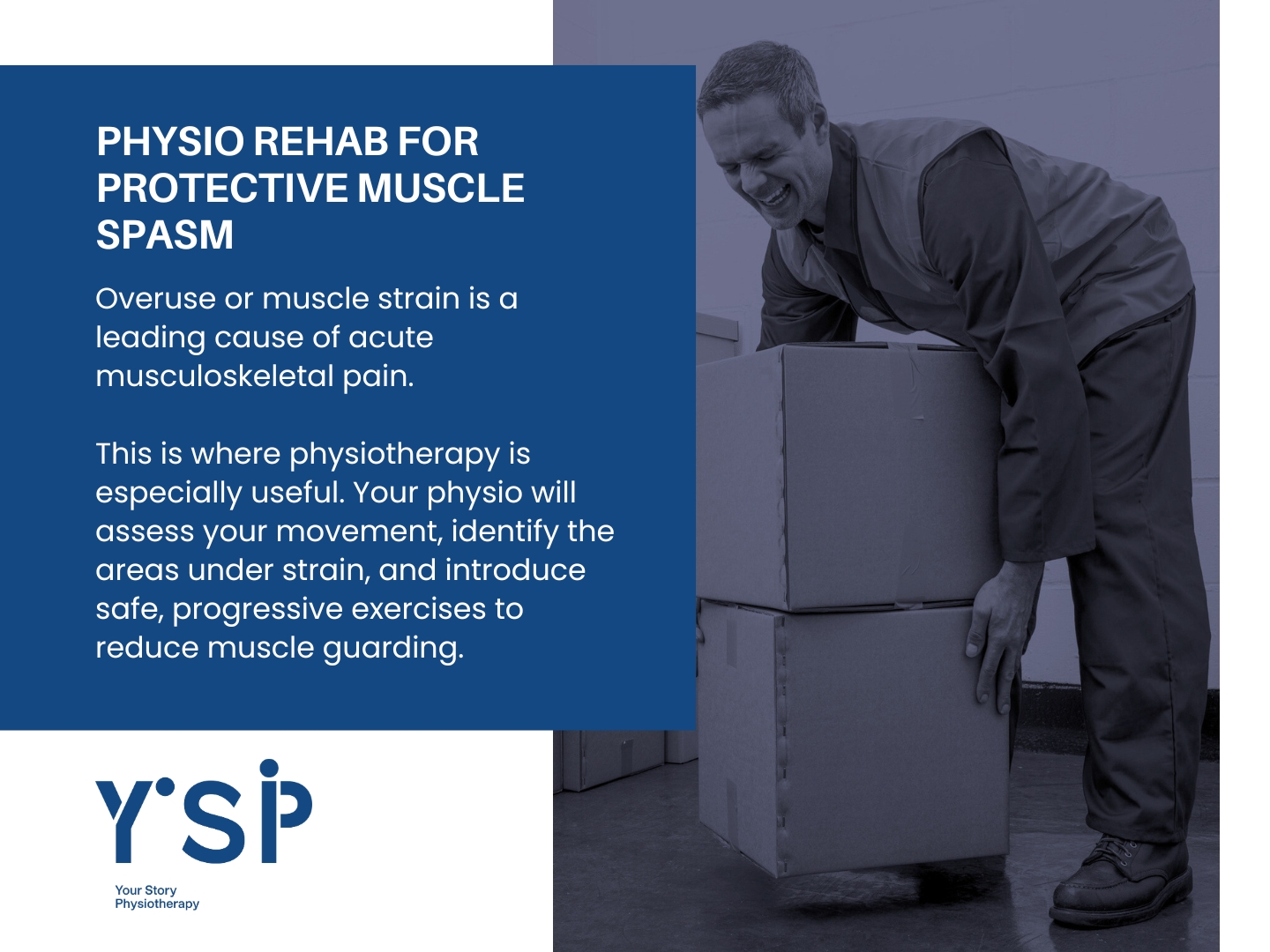It’s the day after moving house, doing a big yard cleanup, or rearranging your living room. Now, you can barely turn your head or stand up straight. What you’re likely experiencing is a protective muscle spasm — your body’s natural way of shielding itself from further harm after it’s been pushed too far.
While it can feel alarming, this sudden tightness or pain is a normal (if unpleasant) response to physical overload. Fortunately, with the right physiotherapy guidance, you can recover quickly and reduce your risk of it happening again.
What Is a Protective Muscle Spasm?
A protective muscle spasm is your body’s built-in defence mechanism. When muscles are overstretched or exposed to unexpected loads — like lifting boxes all day or pulling out garden roots — your nervous system sends signals for those muscles to tighten up. This creates stiffness and often pain to prevent you from making the movement again and causing further injury.
This type of spasm often affects the lower back, neck, or shoulders and can feel like a sudden cramp, tightening, or restriction in movement. It’s not usually a sign of major damage, but rather a safety switch that’s been triggered.
Why Lifting Heavy Loads Triggers It
Most people aren’t lifting large loads every day. So when you suddenly spend hours moving furniture, lifting awkward boxes, or working overhead, your body isn’t fully prepared. Muscles fatigue, posture slips, and joints take on more stress than they’re used to.
This is when the nervous system reacts by “locking” the area up to protect it. Common triggers include:
- Moving house or lifting heavy furniture
- Weekend gardening or yard work
- Helping a friend move unexpectedly
- Prolonged bending, twisting, or lifting with poor form
According to Healthdirect, overuse or muscle strain is a leading cause of acute musculoskeletal pain in Australians. Read more here.
So, Should You Rest or Move Through the Spasm?
While the instinct is often to lie still, full rest can actually make things worse. It’s usually better to keep moving gently within a pain-free range. Gradual mobility helps calm the nervous system and reintroduce safe movement.
This is where physiotherapy is especially useful. Your physio will assess your movement, identify the areas under strain, and introduce safe, progressive exercises to reduce muscle guarding.
How Physiotherapy Helps Relieve Muscle Spasm
A physiotherapy approach to protective muscle spasm typically includes:
- Manual therapy: Gentle massage and mobilisation techniques help release muscle tension.
- Stretching & mobility: Targeted movements reduce tightness and restore range of motion.
- Strengthening exercises: Light resistance training reconditions muscles and supports recovery.
- Heat or ice therapy: Depending on the stage of healing, this can reduce pain and inflammation.
- Postural advice: Learning how to move and lift properly can prevent repeat episodes.
Queensland Health recommends seeking physiotherapy when pain restricts movement or function. Read more here.
Why Your Story Physiotherapy Is Uniquely Equipped to Help
Your Story Physiotherapy combines expert care with tools and equipment you won’t find at just any clinic:
- On-site gym and Smith Machine: We don’t just tell you what exercises to do — we walk you through them in a controlled, supportive environment.
- Recovery Lab access: You can access recovery technology often used by athletes, including Normatec boots, infrared sauna, and massage tools.
- All-in-one rehab space: From assessment to recovery, everything you need is in one place.
We understand that each patient’s recovery story is different. Our team takes time to listen, guide, and adapt your program to your specific needs.
How to Prevent Future Muscle Spasms
While some level of soreness after heavy lifting is normal, there are things you can do to reduce the chance of a spasm next time:
- Warm up with light activity before lifting
- Use correct lifting technique (lift with your legs, not your back)
- Break big jobs into smaller chunks
- Hydrate and take breaks often
- Strengthen your core and posture muscles through regular movement
And if pain does flare up again, don’t wait it out. Early intervention with physiotherapy can help you avoid prolonged discomfort and build a more resilient body.

Ready to Recover? Here’s What to Do Next
A protective muscle spasm is your body asking for support. At Your Story Physiotherapy, we provide that support with empathy, evidence-based care, and the right tools for recovery.
Book an appointment today, and one of our experienced physiotherapists will tailor a rehabilitation program to fit your needs.




